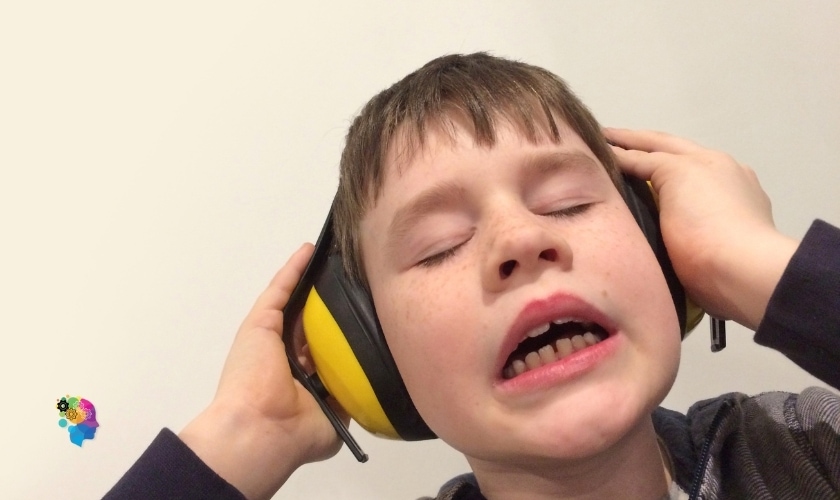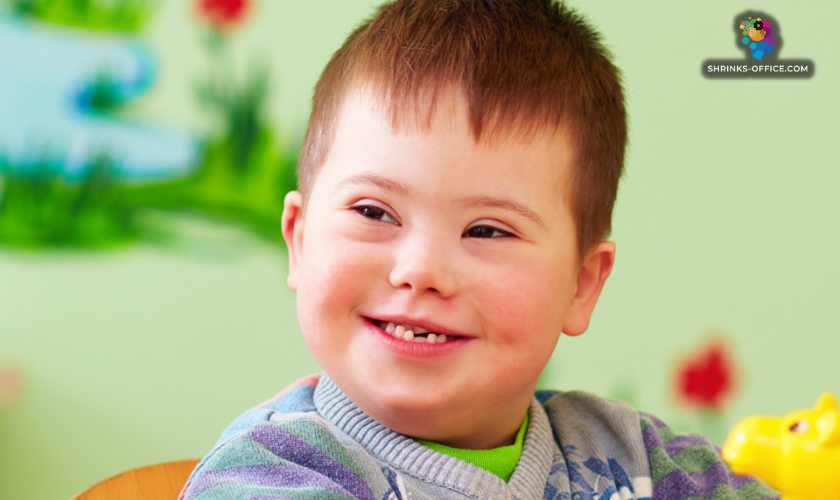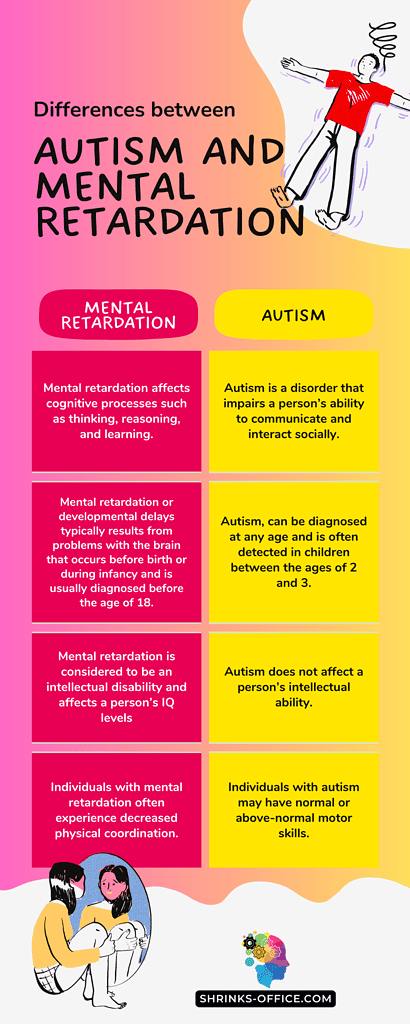Autistic Burnout Symptoms You Need To Gain A Perspective On
For autistic adults and those who care for autistic people, it can be overwhelming and exhausting. Overlooking autistic burnout is easy when everyday life is already so challenging. Recognizing autistic burnout symptoms isn't just crucial for the adult's overall well-being and the entire family's mental health.
Autistic burnout occurs in various physical, emotional, and behavioral signs; a combination of these symptoms often affects autistic adults. Understanding what's going on is essential to providing them with the help they need.
Did you know? There is some evidence to suggest that a vegetarian diet may be beneficial for individuals with autism and autistic burnout. It may reduce symptoms of autism burnout, including anxiety, depression, and irritability.

The meaning of autistic burnout
Autistic burnout is a term used to describe a state of physical, emotional, and mental exhaustion experienced by individuals on the autism spectrum.
A range of symptoms often characterizes as;
- Physical exhaustion
- Changes in appetite and sleep patterns
- Depression and feelings of hopelessness
- Difficulty regulating emotions
- Decreased productivity
- Difficulty completing tasks
Autistic burnout can occur due to various factors;
- The demands of daily life
- Social isolation or too many social interactions
- Lack of support
- Sensory overload
- Chronic life stress
It's essential for autistic people and their loved ones to recognize the signs of autistic burnout and seek help managing the condition.

Importance of recognizing signs of autistic burnout
Recognizing the symptoms of autistic burnout is essential because it allows autistic people and their loved ones to take steps to address and manage the condition before it becomes severe.
The Psychcentral revealed that a whopping 70% of those diagnosed with autism reported burnout. While Pubmed conducted a survey that found an even more astonishing statistic; 23% - 37% of adults on the autism spectrum suffer from mental health issues, including burnout.
In addition, recognizing the signs of autistic burnout can help autistic adults and their loved ones identify potential triggers for the condition and take steps to prevent it. For example, suppose an individual with autism is experiencing burnout due to the demands of daily life. In that case, they and their loved ones may be able to identify strategies for reducing those demands or seeking additional support to manage them.
Recognizing the signs of autistic burnout is essential for promoting the well-being and overall functioning of individuals on the autism spectrum. It allows individuals to identify and address the condition before it becomes severe and take steps to prevent it.
Physical symptoms of autistic burnout
Autistic burnout can cause various physical symptoms, which can be unpleasant and make it difficult to do everyday activities. Some of these physical symptoms include:
Exhaustion
This means feeling very tired and needing more energy. It can be hard to do things you usually do when you feel exhausted.
Changes in appetite and sleep patterns
You might not feel hungry as often as you usually do or always feel hungry. You might also have trouble sleeping or feel like you need to sleep more than usual.
Physical pains or aches
You might feel physical pains or aches, such as headaches or stomachaches. These pains can be uncomfortable and make it hard to do things you enjoy.
Insomnia or other sleep disturbances
Insomnia means not being able to fall asleep or stay asleep. You might also have nightmares, night terrors, or sleepwalking. These can make it hard to get the rest you need and affect your energy levels during the day. The MZOO Sleep Eye Mask will help you to sleep better.
Stomach or digestive problems
You might have stomachs or digestive problems such as nausea, vomiting, diarrhea, constipation, and a loss of appetite. These can make it difficult for your body to get the nutrients it needs and cause fatigue.
Too much sensory stimuli
It can feel overwhelming when too many things are happening around you. This could be sights, sounds, smells, or even textures that make it hard to concentrate and focus.
Pay attention to these physical symptoms and tell a trusted adult if you are experiencing them. Many things, including autistic burnout, can cause them, and getting help is essential if you feel unwell.

Emotional symptoms of autistic burnout
Experiencing autistic burnout can also cause emotional symptoms, which are feelings that are difficult to manage. Some emotional signs of autistic burnout include:
Depression and feelings of hopelessness
This means feeling sad, down, or like there is no hope for the future. It can be hard to do things you enjoy when you feel this way.
Loss of interest in activities
You might find that you don't want to do things you usually enjoy, like hanging out with friends or playing sports.
Anxiety and panic attacks
Anxiety is a feeling of dread or fear that can be hard to control. Panic attacks are sudden and intense moments of anxiety; they can make it difficult to focus on tasks or even move around.
Irritability and anger
You might find yourself snapping quickly or feeling angry more often than usual. This can affect your relationships with others and make it hard to concentrate on tasks.
Emotional numbness or apathy
You might feel disconnected from your emotions or utterly detached from the world around you. This can make it hard to connect with people and enjoy activities in which you once found pleasure.
Increased sensitivity to criticism
You may become extra sensitive to criticism, making it difficult to interact with others. It might also lead to anxiety about making mistakes or being judged for your actions.
Difficulty regulating emotions
It can be hard to control your feelings when you have autistic burnout. You might feel unfortunate one moment and then very angry the next, or you might feel overwhelmed and unable to cope with your feelings.
Pay attention to your emotional symptoms and talk to a trusted adult if you feel overwhelmed or can't cope with your feelings. Some people can help you manage your emotions and feel better.
Behavioral symptoms of autistic burnout
Autistic burnout can also cause behavior changes, making it difficult to do what you usually do. Some behavioral symptoms of autistic burnout include:
Withdrawal from social activities and interactions
You might want to avoid hanging out with friends or participating in group activities as much as you usually do.
But your social health is as important as your physical or mental health, and to learn more - read What Is Social Health? Examples, And 7 Tips On How To Achieve It.
Decreased productivity and difficulty completing tasks
You might need help getting things done or completing tasks that you would typically be able to do.
Increased impulsivity or risk-taking behaviors
You might make decisions without thinking them through or take more risks than you usually would.
Pay attention to changes in your behavior and talk to a trusted adult if you have difficulty participating in activities or completing tasks. Some people can help you manage these behavioral changes and feel better.
Cognitive symptoms of autistic burnout
Autistic burnout can also cause changes in the way you think and process information. These changes are called cognitive symptoms. Some mental symptoms of autistic burnout include:
Difficulty concentrating and completing tasks
You might need help paying attention to things or remembering what to do. To help keep track of your responsibilities or help you remember your priorities, we suggest Legend Planner.
Memory problems
You might need help remembering things you usually have no trouble with, like your phone number or address.
Decreased problem-solving ability
You might have difficulty finding solutions to problems or figuring out how to do things.
Pay attention to changes in your thinking and processing abilities, and talk to a trusted adult if you are having difficulty with these things. Some people can help you manage these cognitive changes and feel better.

How do you manage autistic burnout?
Autistic burnout is a common occurrence that can hinder productivity and mental well-being. If left unchecked, it can impede an individual's ability to function optimally. It is essential to be proactive in managing the onset of burnout.
- Prioritize self-care: Get enough sleep, eat well, and engage in physical activity. Setting aside time for relaxation and activities you enjoy is also essential.
- Learn to recognize your limits: Pay attention to your energy levels and avoid overloading yourself with too many activities or responsibilities.
- Create a routine: Establishing a daily routine can help reduce stress and make it easier to manage your time.
- Practice mindfulness: Mindfulness techniques such as meditation or yoga can help reduce stress and improve focus.
- Communicate your needs: It's essential to communicate your needs to friends, family, and caregivers so they can better understand how to support you.
- Seek professional help: If you are experiencing severe burnout, speak with a therapist or counselor who can provide guidance and support.
- Reduce sensory overload: Take steps to reduce sensory input in your environment, such as using noise-canceling headphones or avoiding bright lights.
- Seek out social support: Connecting with other individuals who understand and relate to your experiences can be incredibly helpful in managing burnout.
- Plan: Break down larger tasks into smaller, manageable chunks and plan for the things you need to do; this way, you don't feel overwhelmed.
- Take breaks: Make sure you take regular daily intervals to rest and recharge your batteries.
Remember, it's essential to pay attention to your symptoms and talk to a trusted adult if you are having a hard time. Some people can help you manage your condition and feel better.
Conclusion
Burnout can be a complex problem, but some strategies can help you cope. With the right mentality and emotional support, you can eventually overcome this challenge and lead a healthy, balanced life.
By focusing on self-care and taking time for yourself, you can work towards improving your overall well-being. And to learn more about autism, we suggest you look at Maybe It's Time You Understand And Embrace Autism.
FAQ
What's the differences between autistic burnout and regular burnout?
There are several significant variations between autistic burnout and ordinary burnout, although they do have some characteristics, such as feeling worn out and emotionally spent. The difficulty of negotiating social relationships, hiding or repressing autistic features, and coping with sensory overload are more likely to be the causes of autistic burnout than a lack of understanding, acceptance, and accommodations in the neurotypical world.
How can autistic individuals navigate the workplace while minimizing burnout?
By being aware of and speaking for their needs, establishing boundaries, and finding ways to recharge their energy, autistic people can function in the workplace while preventing burnout. In order to improve their performance, this may include making modifications, such as a calmer workplace, a flexible schedule, or particular tools.













